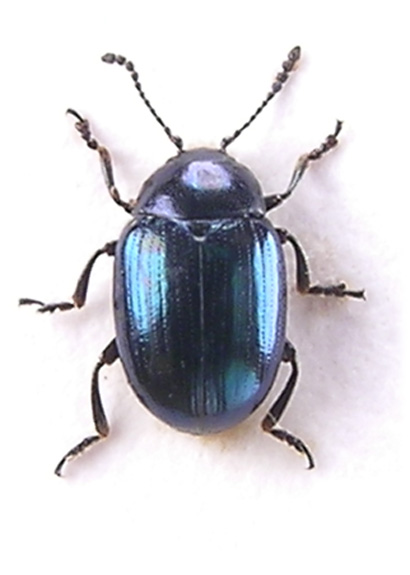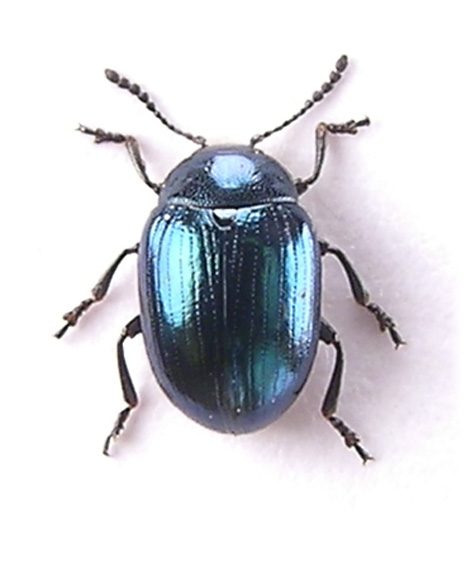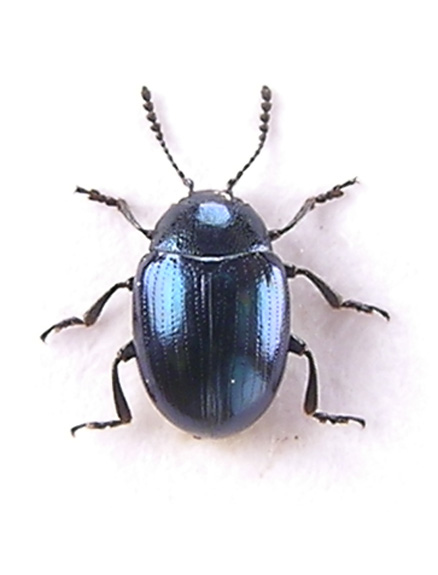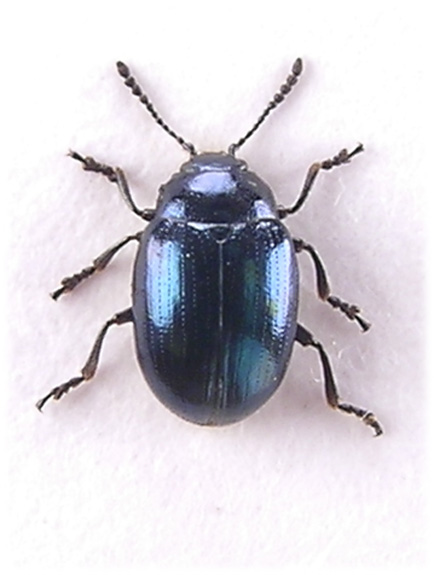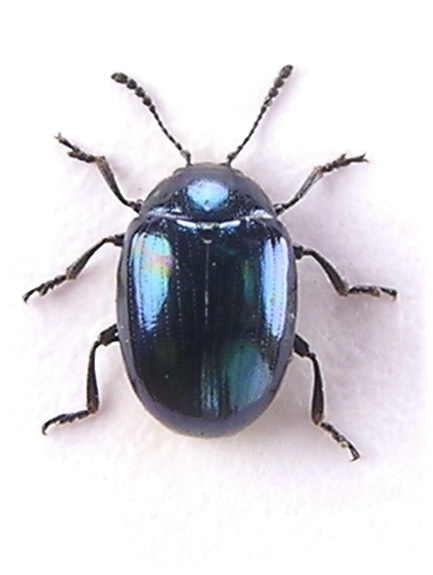 |
Widely distributed throughout Britain although records are scattered north
of southern Scotland. Generally common and often abundant where found, in our experience more so in some years than others.
Occurs throughout the Watford area, in huge numbers around all wetland situations but also in other habitats as they feed on a
variety of plants, generally brassicas, in open woodland, parks, wasteland and gardens. Adults are found throughout the year,
during the winter under debris, loose bark and deep within grass tussucks, especially near water. They are active from the
first warm days of the year, seeking out their foodplant and flying if necessary to do so. Eggs are laid under the leaves over
a period of at least three months (Cox) and larvae are soon obvious. By April adults are abundant
and during May can be seen alongside larvae throughout the watercress beds in Cassiobury park. Larvae grow very quickly,
pupating in an earthen cell in the ground about three weeks after emerging from the egg (Linssen).
There is thought to be a single generation each year although several sources describe two overlapping generations ¹.
New generation adults occur from June until the autumn. Formerly a pest of cultivated watercress (Nasturtium officiniales),
on this host the beetle is abundant throughout Watford and from June or July adults and larvae of all instars may be seen.
Larvae feed on Creeping Yellow Cress (Rorippa sylvestris), Mustard (Brassica nigra), Horse Radish
(Amoracia rusticana) and in maritime situations Common Scurvy grass (Cochlearia officinalis). Adults
are found on a wider variety of plants including Garlic Mustard (Alliaria petiolata) Shepherd's purse (
Capsella bursa-pastoris), radishes (Raphanus satinus and spp.) and a range of Brassica spp.
Towards the end of the summer they may be observed in groups feeding upon the leaves, at this time they are abundant across
the river Colne flood catchment from Watford north to Radlett, the small feeding holes they produce soon become familiar.
Generally speaking they will occur in the sweepnet throughout our area in mild weather.
3-4mm. Elongate oval and brilliant metallic blue ², often with purple overtones, rarely with bronze
or brassy lustre. Antennae dark metallic with first and second segments dark rufous beneath, 7-11 broadened and densely pubescent
so dull compared with 1-6. Inserted before inner margins of eyes, distance between insertions about twice the length of segment 1.
Head shining and quite densely puntured. Pronotum transverse and bordered, finely so on basal margin, distinctly and evenly
punctured throughout (X20) (cf.P.tumidulus Germ.), a little less densely and finely so than head,
between these very finely punctured throughout, just visible at X40. Without microsculpture ³. Scutellum large, glabrous (X40)
and more shiny than pronotum or elytra. Elytra with eight strongly punctate longitudinal striae across middle and a ninth with
puntures much wider spaced, finely bordered and strongly sinuate laterally. Fifth stria not deepened basally, often united with sixth,
outside this there may be a weak humeral swelling (P.armoraciae(L.)). Legs black, all tibiae smooth
on outerside, segment 1 of all tarsi as broad as 3 in male. Last abdominal sternite narrowly edged brown.
� Roebuck, A. 1927. Studies in the genus Phaedon. Transactions of the Lincolnshire Naturalists Union, 1927, 35-42
Smith, K.M. 1951. A textbook of Agricultural Entomology. Cambridge University Press.
� Care must be taken when using Joy, he distinguishes cochleariae and concinnus
on colour (although aedeagi are figured) but forms of concinnus occur which overlap.
³ P.concinnus, a maritime species, is microsculptured towards the pronotal margins.
Description from six Watford specimens at X20
See ID Aids for a guide to the genus
|

